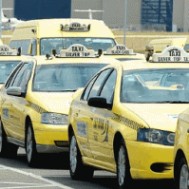
The Victorian Government has announced worthwhile reforms to Victoria’s taxi industry, breaking down some of the licencing barriers and networking requirements that have stifled competition in the industry. From The AFR:
The changes include replacing a system of limited-release perpetual licences with an open-entry system, with leases from the government for $22,000 a year, indexed each year thereafter.
In addition, the requirement to affiliate with major networks has been removed to encourage the use of booking alternatives like smartphone apps.
“There will be a benefit for consumers, you will also improve the prospects of those new players like Uber and so on entering the industry and offering a new deal.”
The reforms in Victoria should help to alleviate many of the problems afflicting the taxi industry arising primarily from a lack of perpetual licences issued. In the case of Melbourne, the overall number of taxi licences had barely risen since the 1970s, despite the huge growth in the city’s population. Reflecting this undersupply, the price of Melbourne taxi licences had also skyrocketed – from under $130,000 in 1989 to over $500,000 in 2012 – an increase of over 7% per annum.
This deliberate undersupply of taxi licences has caused some deleterious impacts on the industry.
The lack of competition and “closed shop” mentality has meant that there is minimal incentive to improve performance and provide better services. It has also driven a wedge between the driver, who typically earns a pittance, and the customer, who ends up paying too much for the service.
As with land, the rental value component of taxi fares goes to the owners of the plates, just like rents on land. So taxi drivers are typically left paying the licence holder an exorbitant share of their fares – often 50% – leaving them with little left over.
In short, the restriction on taxi licences is unnecessary, punishing drivers whilst also leaving customers paying high prices for (often) poor service.
Thankfully, the new reforms enabling an unlimited number of annual licences to be purchased for $22,000 should increase the number of taxis operating on Melbourne’s roads, boosting choice for customers. It will also provide prospective drivers with greater opportunities to run their own taxi business, and earn higher income.
Already, the reforms have had a significant impact on licencing values, which have fallen to $280,000 as at May 2014, on the back of the threat of greater competition.
The next step in the reform process should be to allow ridesharing services, like Uber, to operate on Victorian roads subject to meeting minimum performance standards.
As argued previously, ride-sharing is an economic no-brainer, providing greater choice to consumers and lowering costs, while also improving productivity by facilitating a more efficient use of the existing transport fleet. It would also offer drivers even greater options to derive an income, without paying exorbitant licence fees or rents to taxi plate owners.
Australians should be free to choose their transport options, not have them dictated to by the government for the purposes of protecting the taxi industry.
Unfortunately, the fact that the Victorian Government will earn $22,000 for each annual licence sold means that true reform via ridesharing is less likely to happen.

